Split leaf
to Aliki van der Kruijs’ windowWhat inspired me the most at the ‘The Oasis from Matisse’ exhibition were the details of the cut-out collages and his love for textiles. The forms are made of different parts of paper glued together, which cause relief and subtle differences in colour.
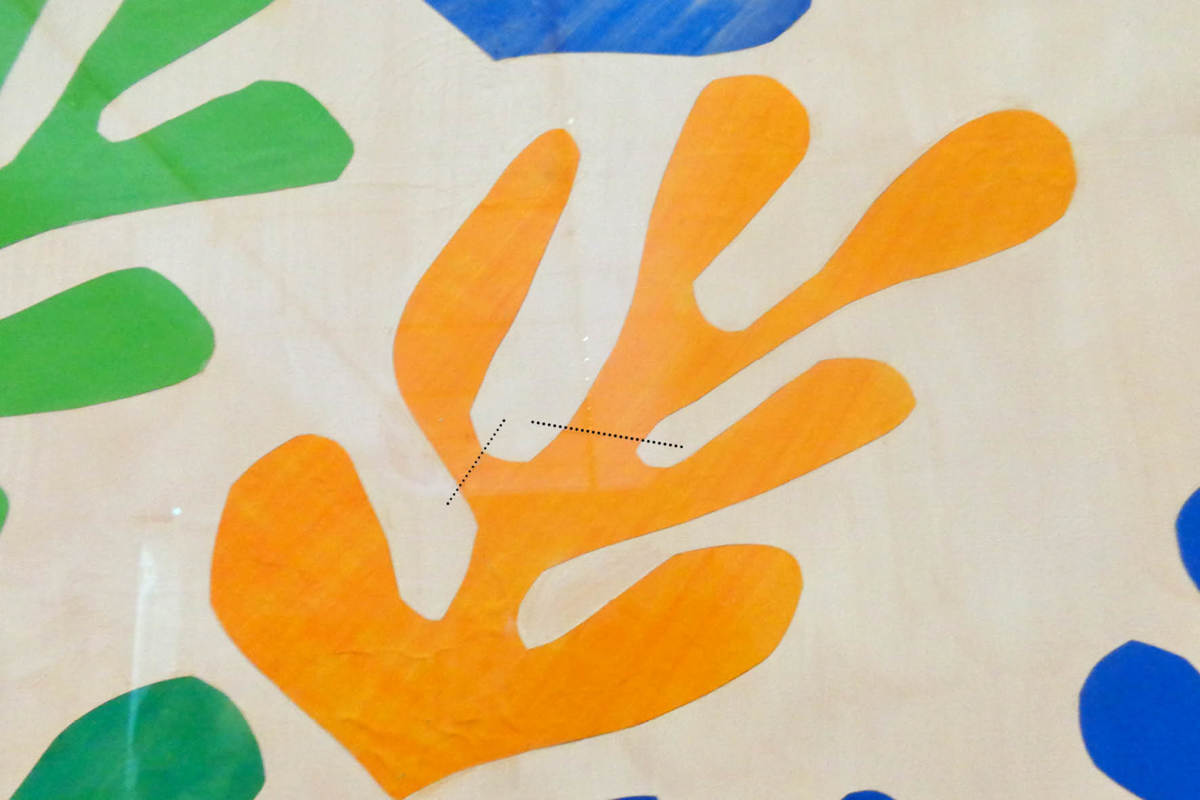
Dashed lines mark how the leaf is constructed
I had seen work of Matisse before, but not in this abundance and I had never taken such a close look. Matisse thought that his lively designs become flat and sterile in reproductions, especially in the book ‘Jazz’. The book marks the transition from the cut-outs as a tool for composition, to autonomous artworks. He came to realise that the dimension and energy he sought were closely related to the material he used to create the collages.
When I look at the contour and the layered paper connections in his work, I wonder how he decided to construct his leafs.
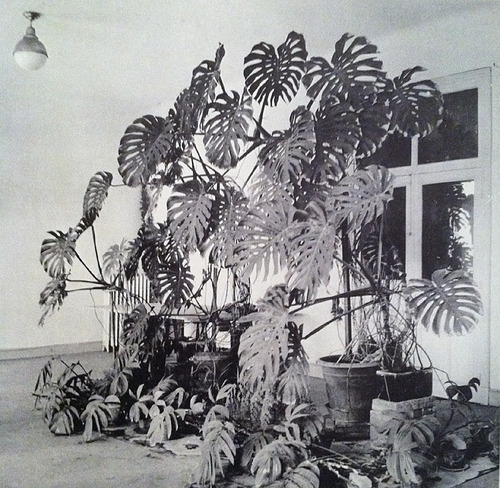
A lot of leaf shapes in the work of Matisse look like the ‘Philodendron’ specie, known for its split leaves.
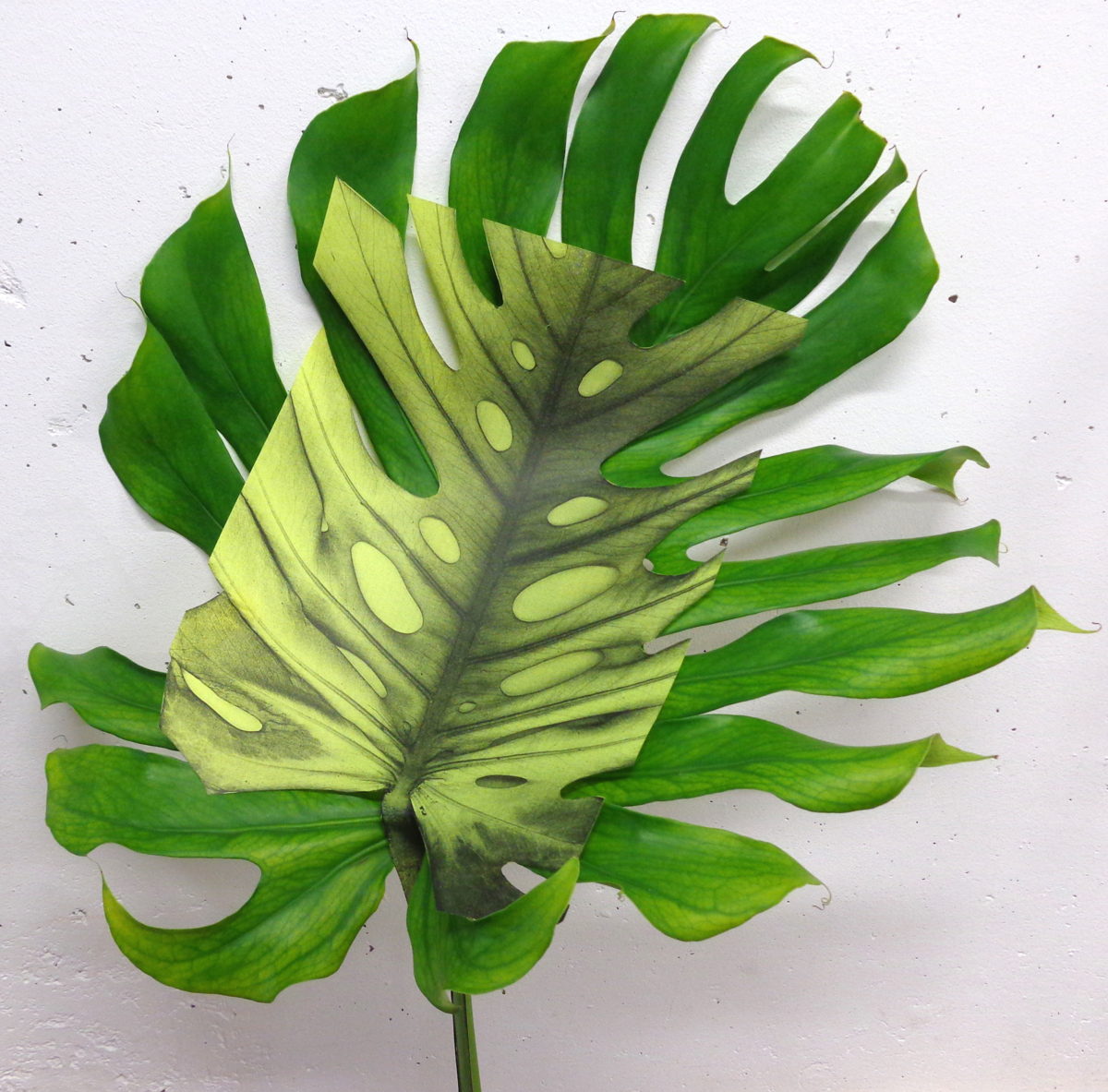
Through my work I find methods to shape my perception of nature. Last year my friend Lenn Cox gave me a photocopy of a Monstera deliciosa for my birthday. She copied the leaf intuitively, because it reminded her of my (organic) work. I started to play with a real and a copied leaf (A3 size).
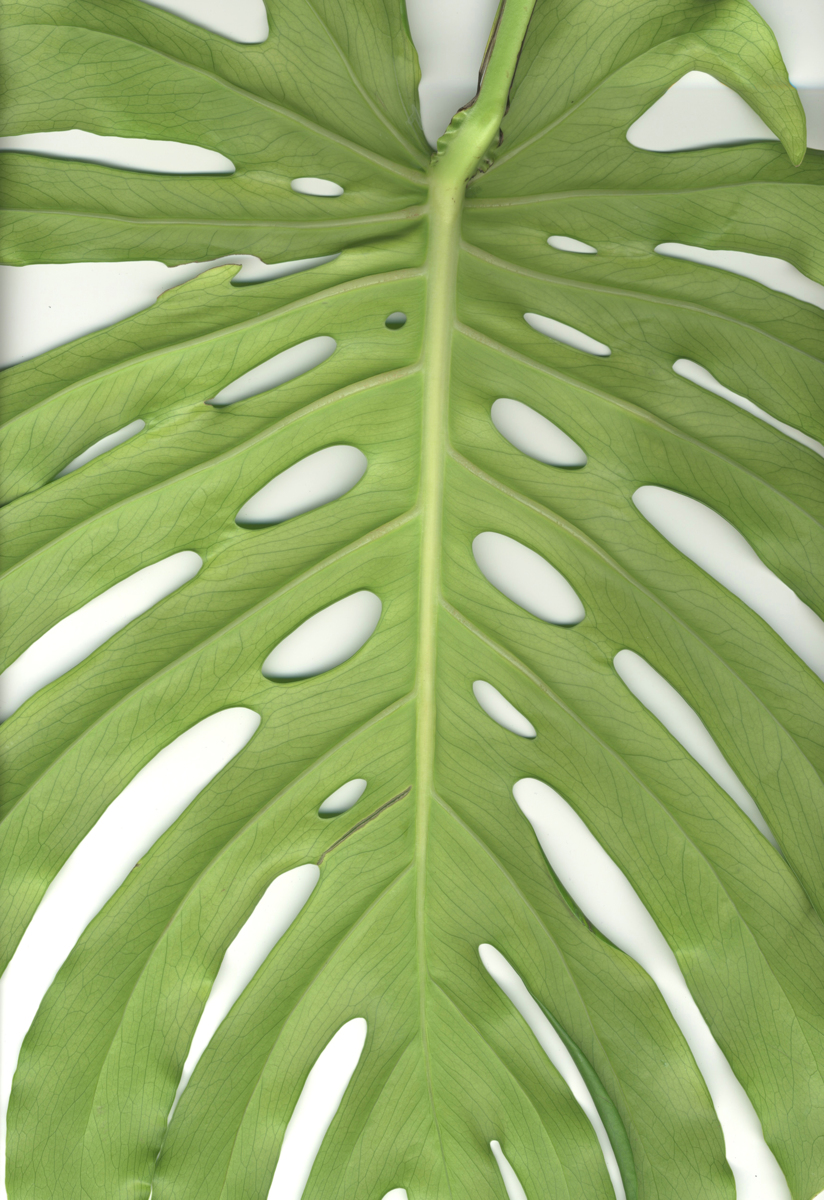
Monstera deliciosa on A3 scanner
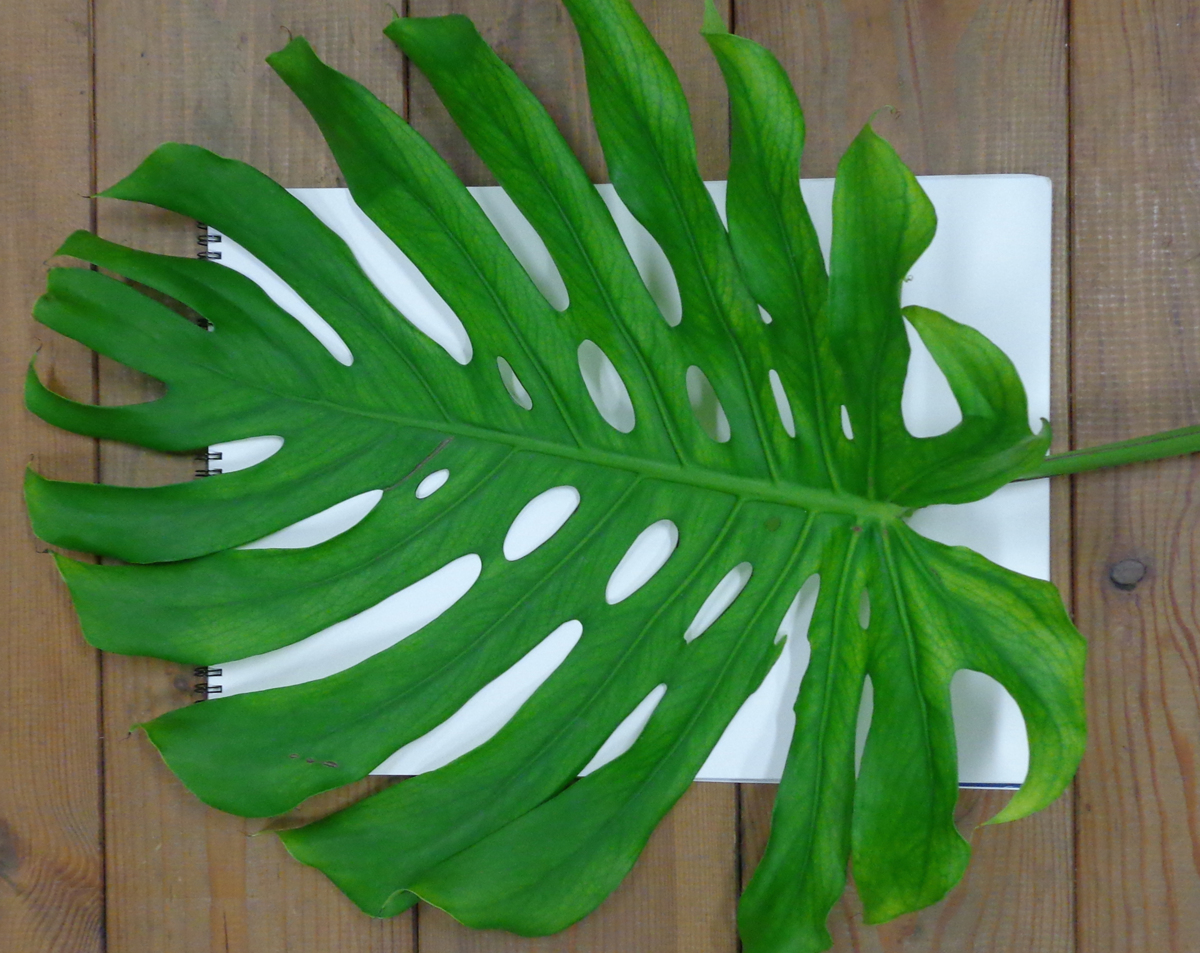
Monstera deliciosa on A3 paper
For the One Window print I prefer to start working with a grid instead of the A3 paper dimension. Working with the organic forms of the leaf and the applied grid creates an interesting composition of shapes and negative spaces. I think this is very useful for the project.
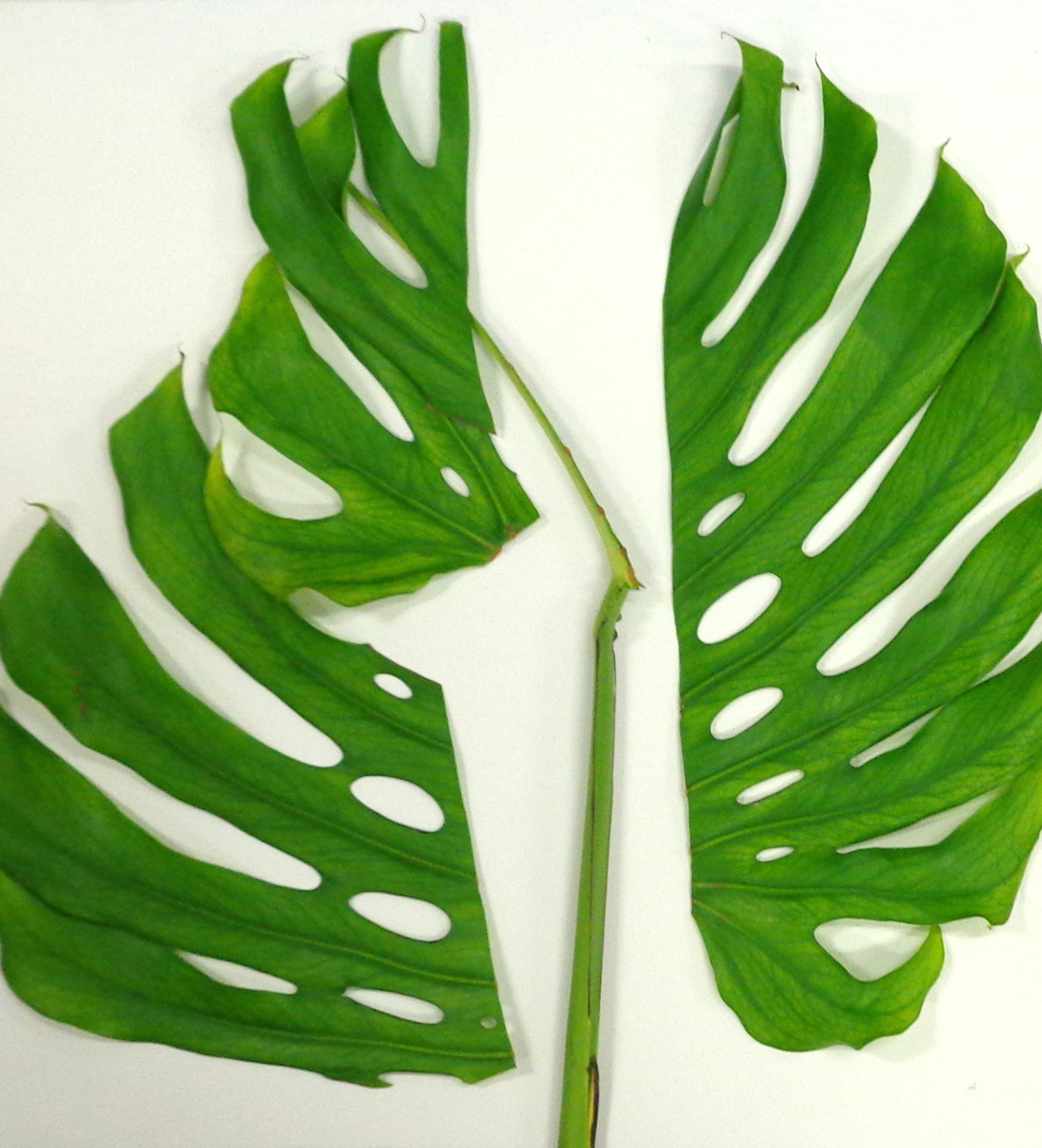
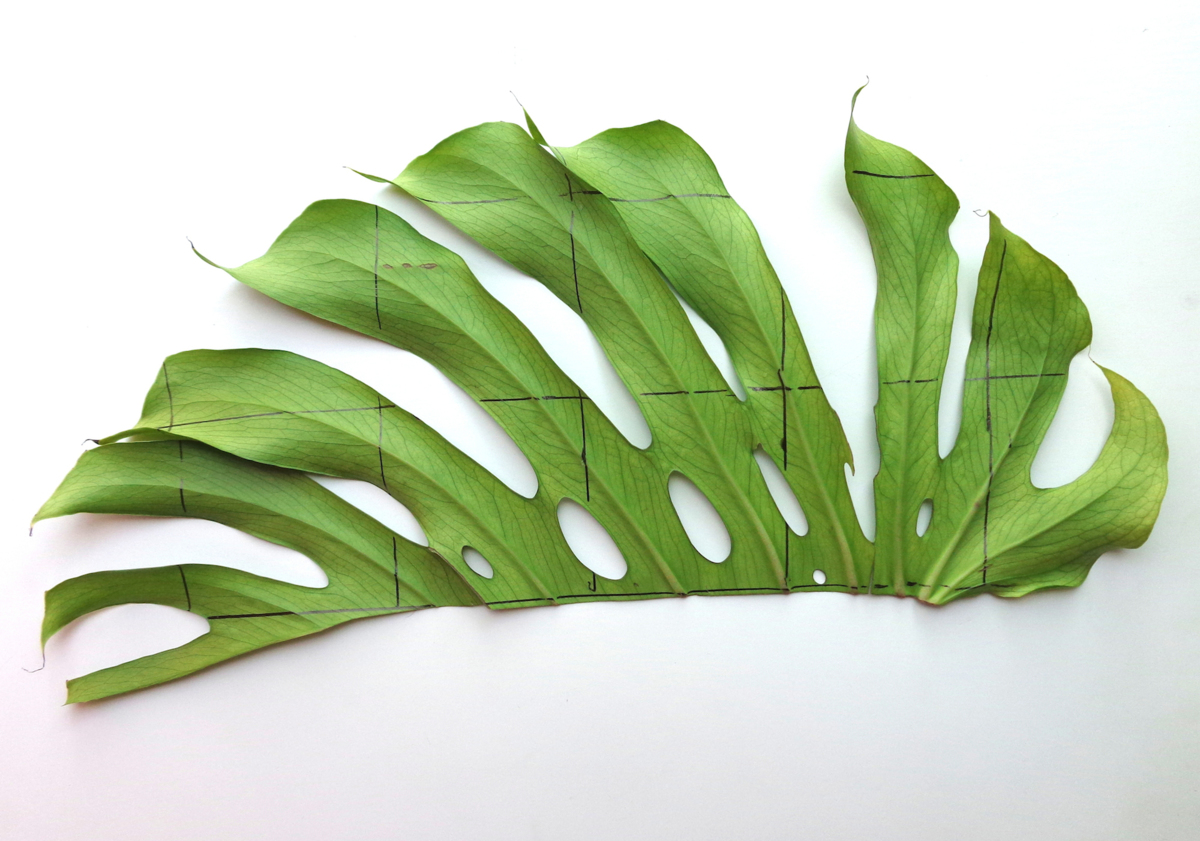
10×10 cm grid
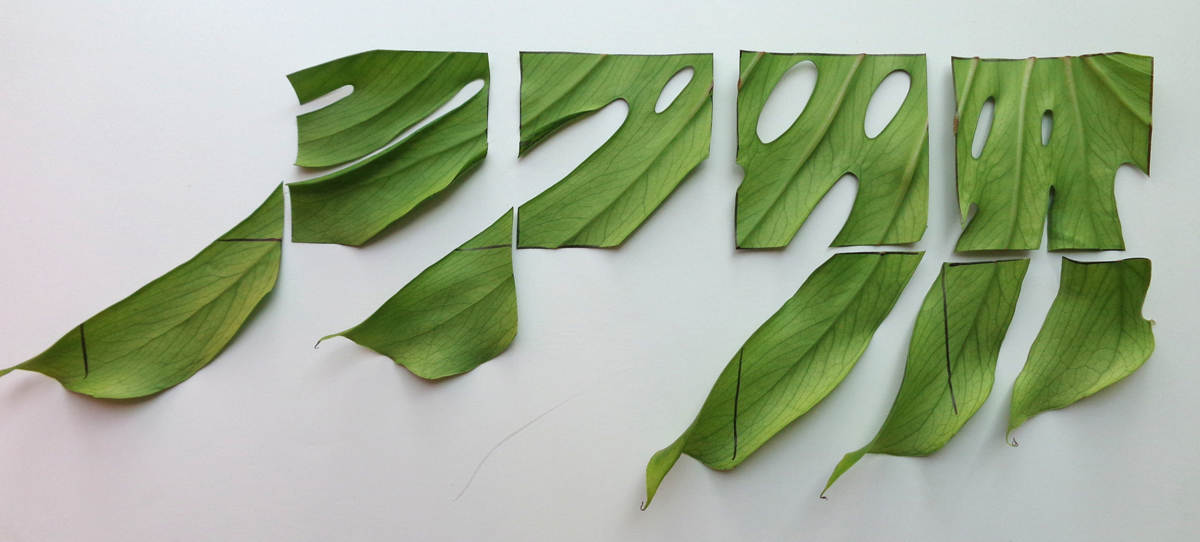
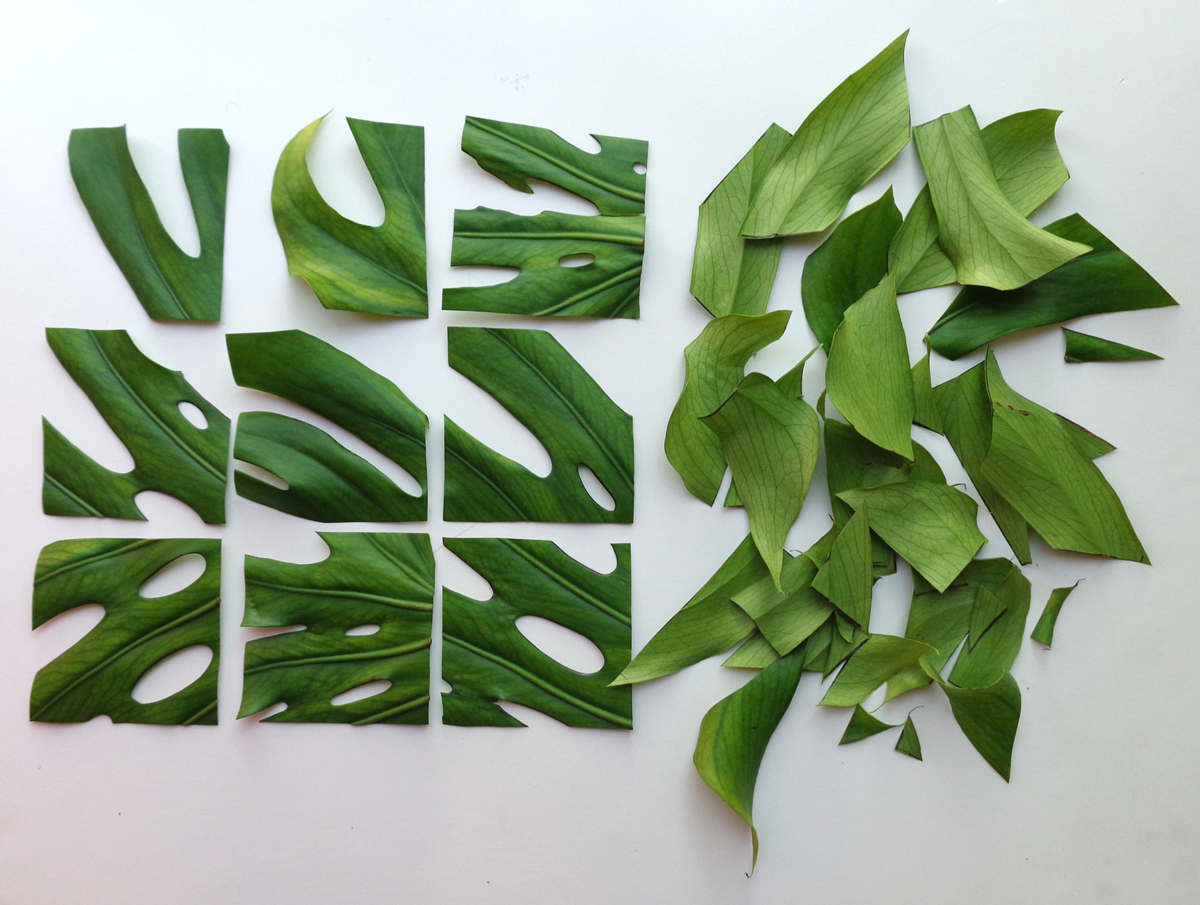
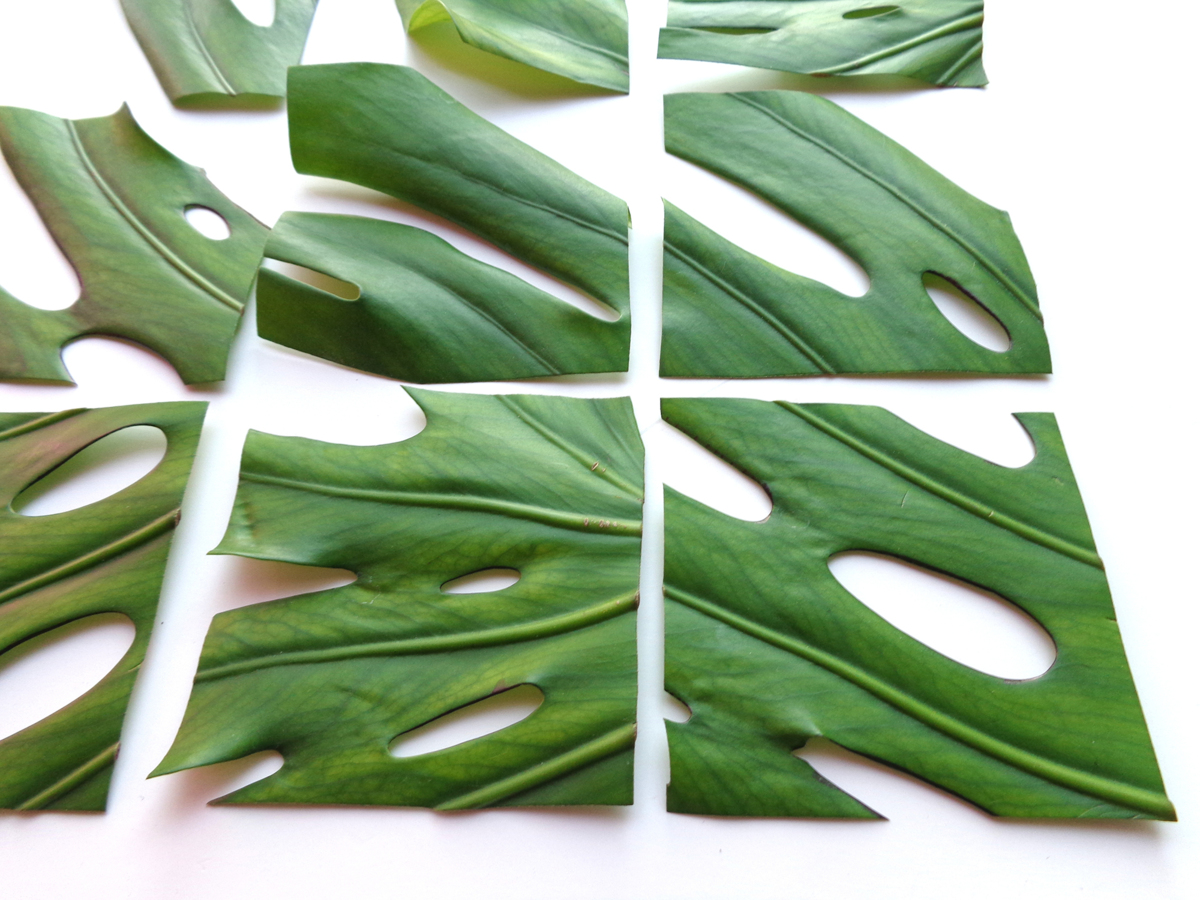
Although the leaf is cut into square pieces, the origin is still very recognisable.
